Beneath Greece’s bustling cities and increasing infrastructure, an historic world waits to be uncovered. In a rustic the place civilization has thrived for millennia, each new metro tunnel, freeway, or airport runs the danger of colliding with archaeology. A subway excavation reveals a Byzantine market, development of a freeway uncovers an historic Roman street, and engineers mapping an airport web site bump into the ruins of a 4,000-year-old Bronze Age construction. The problem is fixed: how does a contemporary nation progress with out erasing the previous?
This dilemma performs out most vividly in Greece’s main infrastructure tasks, from the Athens and Thessaloniki metro traces to the brand new worldwide airport in Crete. Every initiative forces authorities to navigate the fragile stability between financial growth and archaeological preservation – generally in ways in which spark fierce debate.
How does Greece handle this tightrope act? What does it imply for cities the place historical past runs as deep as their foundations? And what classes can the world study from a rustic that should construct the long run with out erasing the previous?
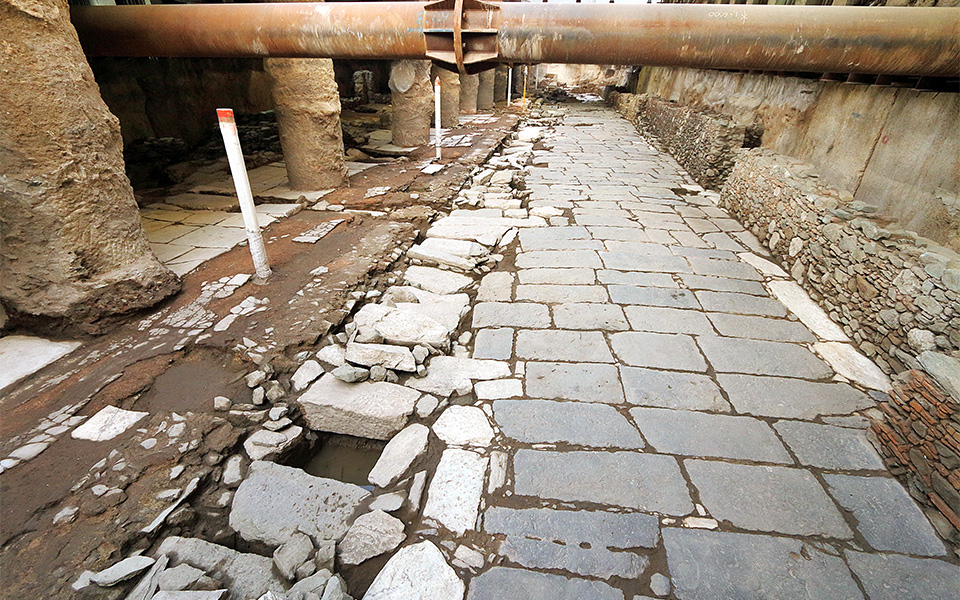
© Hellenic Ministry of Tradition
Thessaloniki Metro – A Subterranean Time Capsule
Few infrastructure tasks illustrate the push and pull between historical past and progress extra vividly than Thessaloniki’s metro system. Launched in 2003 and initially slated for completion by 2012, the venture as an alternative became one among Greece’s most extraordinary archaeological excavations. Over 300,000 artifacts spanning Hellenistic, Roman, Byzantine, and Ottoman eras have been unearthed beneath the densely populated metropolis, reworking burgeoning metro stations into surprising dig websites.
“This venture gives a outstanding mix of the traditional and fashionable, integrating archaeological heritage with metro infrastructure,” mentioned Christos Staikouras, Greece’s transport and infrastructure minister, forward of the metro’s long-awaited opening in late November 2024.
A few of the most placing discoveries emerged from stations within the historic heart, most notably Venizelou and Aghia Sofia, the place archaeologists uncovered layers of historical past stretching again to Thessaloniki’s founding below Cassander within the 4th century BC. Essentially the most astonishing discover was a well-preserved part of the Decumanus Maximus, a Roman thoroughfare as soon as teeming with retailers and vacationers. At Aghia Sofia station, superbly preserved Late Roman mosaics hinted on the grandeur of an historic villa that after stood on the location.
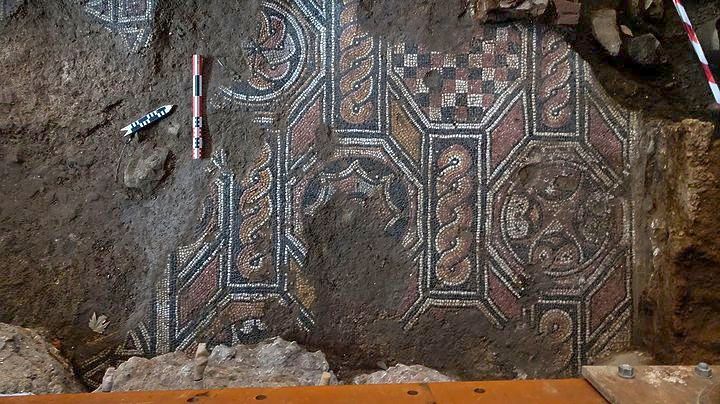
© Hellenic Ministry of Tradition
Confronted with the problem of preserving these invaluable artifacts whereas preserving the metro venture transferring ahead, the Central Archaeological Council (KAS), Greece’s supreme advisory physique for all issues pertaining to the “safety of antiquities and cultural patrimony normally,” made an unprecedented determination: relatively than relocate the finds to museums, they might combine parts of them into the stations themselves, successfully reworking public transport hubs into mini subterranean museums.
At Venizelou Station, the place excavations revealed a remarkably intact Byzantine streetscape and market, the federal government’s dealing with of the artifacts turned a flashpoint. Successive administrations wavered between preserving the antiquities in place and eradicating them to expedite development. After intense debate and pushback from archaeologists and the general public, the federal government settled on a compromise – eradicating and later reinstalling the artifacts at a barely decrease depth throughout the station. At this time, the location stands as a singular mix of recent infrastructure and historic city historical past, providing metro passengers a window into the town’s previous as they transfer by way of its current.
After 12 years of delays, the Thessaloniki Metro lastly opened in late 2024. Whereas critics argue that preservation efforts slowed the town’s growth, others see it as a obligatory value to pay for safeguarding an irreplaceable legacy. What is evident, nonetheless, is that Thessaloniki’s metro is now not nearly transportation – it has develop into a testomony to the town’s enduring place on the crossroads of civilizations.
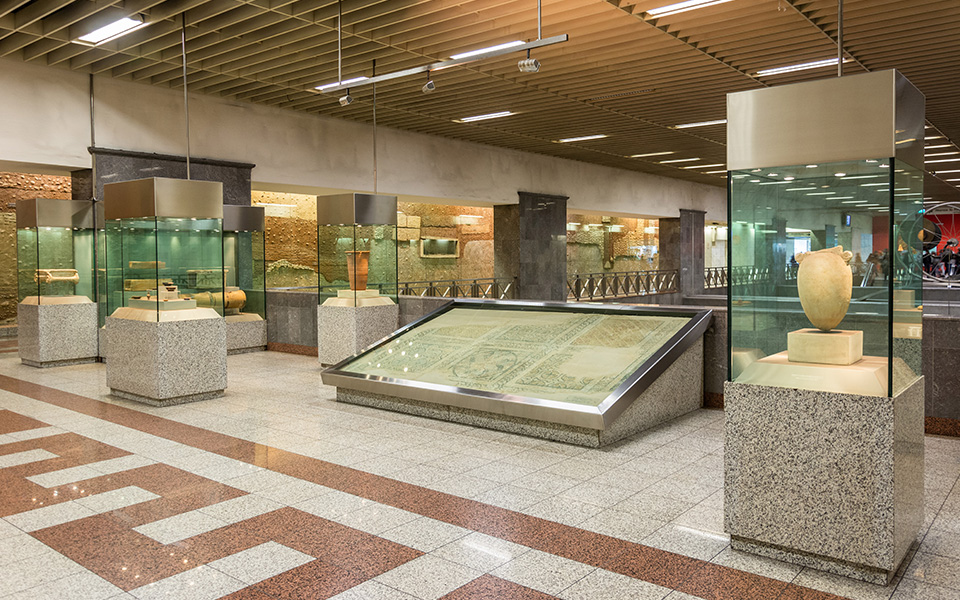
© Shutterstock
Athens Metro – Layers Beneath the Capital
Athens, a metropolis the place historical past permeates each nook, confronted the same problem within the Nineties whereas increasing its metro personal system. Excavations unearthed hundreds of artifacts, together with historic cemeteries, pottery, and sections of the town’s classical street community.
Not like Thessaloniki, the place the talk over artifact preservation was lengthy and contentious, Athens discovered an modern compromise: many discoveries have been preserved in situ inside metro stations, reworking them into public exhibitions. At this time, commuters passing by way of Syntagma and Monastiraki stations can view historic ruins, turning an bizarre commute right into a journey by way of historical past.
A placing instance may be present in the newly opened metro station at Piraeus. In a domed passageway, guests and commuters can examine show panels and look down by way of glass flooring at a mosaic from a 4th-century BC home, surrounded by ceramics and different home artifacts. “We’re giving passengers a glimpse of day by day life in historic Piraeus,” mentioned archaeologist Stella Chryssoulaki.
Talking to The Guardian, one city planner described Athens’ metro as “an ideal marriage of the traditional and the fashionable – public transportation in Athens isn’t only a technique of getting from A to B, it’s a journey by way of historical past.”
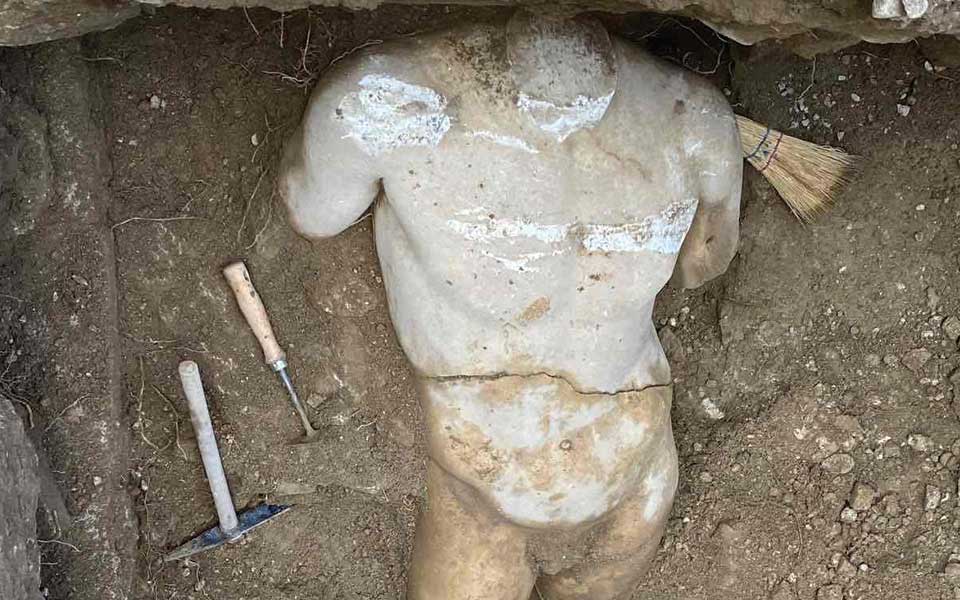
© Hellenic Ministry of Tradition
However it isn’t simply the metro that uncovers archaeological treasures. In December 2024, excavation work on Erechtheiou Avenue, close to the Acropolis, revealed a unprecedented discover: a well-preserved white marble statue of a nude male figure, resembling the famed Hermes Ludovisi. Buried only a meter under avenue degree, the late Roman-era statue was found on the nook of Erechtheiou and Kallisperi Streets.
In accordance with Elena Kountouri, head of the Ephorate of Antiquities of the Metropolis of Athens, the statue may need belonged to a bigger ensemble, probably linked to one of many important architectural complexes within the space, similar to the Home of Proclus – a late Roman villa from the fifth century AD. Different statues and artifacts could but observe.
Archaeologists swiftly eliminated the statue for conservation and additional examine, guaranteeing that the street was reopened and the town’s infrastructure was not considerably disrupted. The invention serves as a strong reminder that beneath Athens’ bustling fashionable streets, layers of historic historical past stay hidden, ready to be revealed.

Crete’s Airport Growth – A Conflict of Eras
The problem of integrating historic artifacts into fashionable infrastructure extends past city transit tasks and gasoline pipelines. In 2024, throughout excavation work for the brand new Kastelli Airport in Crete, archaeologists made a surprising discovery: a 4,000-year-old monumental circular structure atop Papoura Hill, believed to be from the Minoan Bronze Age (early to mid-2nd millennium BC).
The 48-meter-wide construction consists of concentric stone-built rings forming an exterior stepped “crepidoma” (multi-level platform) and a central round constructing. Surrounding this core are radial partitions creating smaller rooms in a labyrinthine structure.
“It’s positively not a sign tower,” clarified Vasso Sythiakaki, head of the Irakleio Ephorate of Antiquities. “Nor does it relate to the worship of Zeus and Rhea, as has been written. The monument is clearly Minoan.” But its actual objective stays a thriller. “That’s the million-dollar query,” she added. “It’s nonetheless too early to know. The excavation is ongoing. No matter we are saying now won’t be scientifically substantiated.”
The invention instantly threw the airport’s development into flux. After a lot debate, and given the importance of the discover, the Greek authorities determined to relocate the airport’s radar tower. Moreover, greater than 35 archaeological websites have been investigated and documented as a part of the airport venture. Some have been excavated and backfilled, whereas others have been relocated. “Very fascinating findings have been found, and the most effective will likely be exhibited in a museum to be created within the airport constructing,” Sythiakaki said.
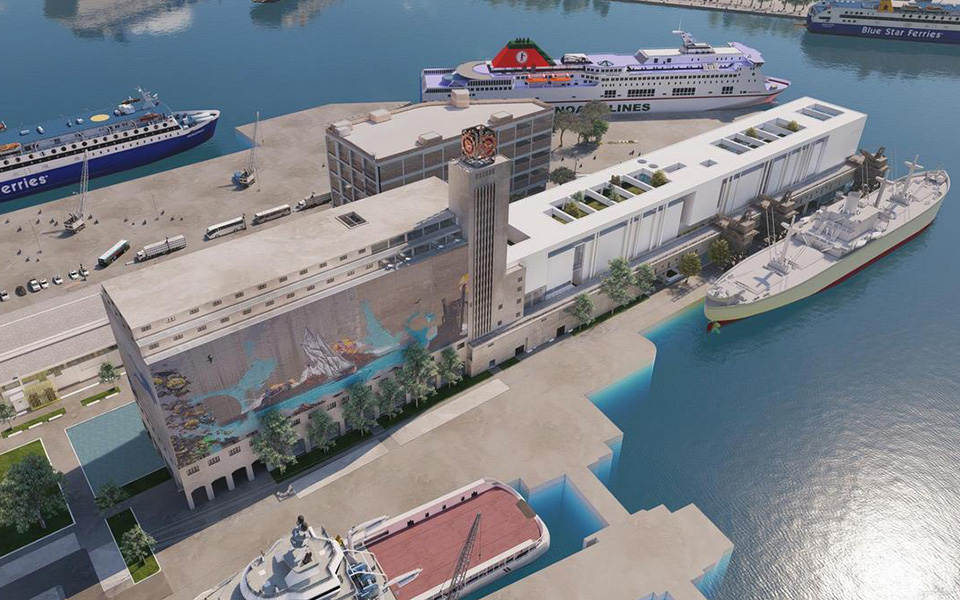
© Hellenic Ministry of Tradition
Piraeus’ Underwater Antiquities Museum – A Design Rooted in Transformation
On the bustling waterfront of Piraeus, a outstanding transformation is going down. The Nationwide Museum of Underwater Antiquities, set to open in 2026, will breathe new life into the historic SILO constructing – an enormous grain warehouse from the Nineteen Thirties – by changing it right into a state-of-the-art museum devoted to Greece’s maritime previous.
This bold venture, a part of the Piraeus Cultural Coast Undertaking, is a placing instance of adaptive reuse. Fairly than demolish the imposing industrial construction, architects and preservationists are reimagining it as a contemporary exhibition area, preserving its historic character whereas adapting it for public engagement. The museum will showcase shipwrecks, the remnants of misplaced cargoes, and artifacts retrieved from the depths of the Mediterranean, providing a glimpse into the seafaring traditions that formed historic Greece. Guests will have interaction with interactive displays, multimedia installations, and cutting-edge shows that deliver Greece’s maritime historical past to life.
By repurposing this industrial relic into a dynamic cultural landmark, the venture highlights Greece’s forward-thinking strategy to heritage conservation. The Nationwide Museum of Underwater Antiquities’ prime location on the Piraeus waterfront ensures that the previous stays an important a part of the town’s evolving city panorama.
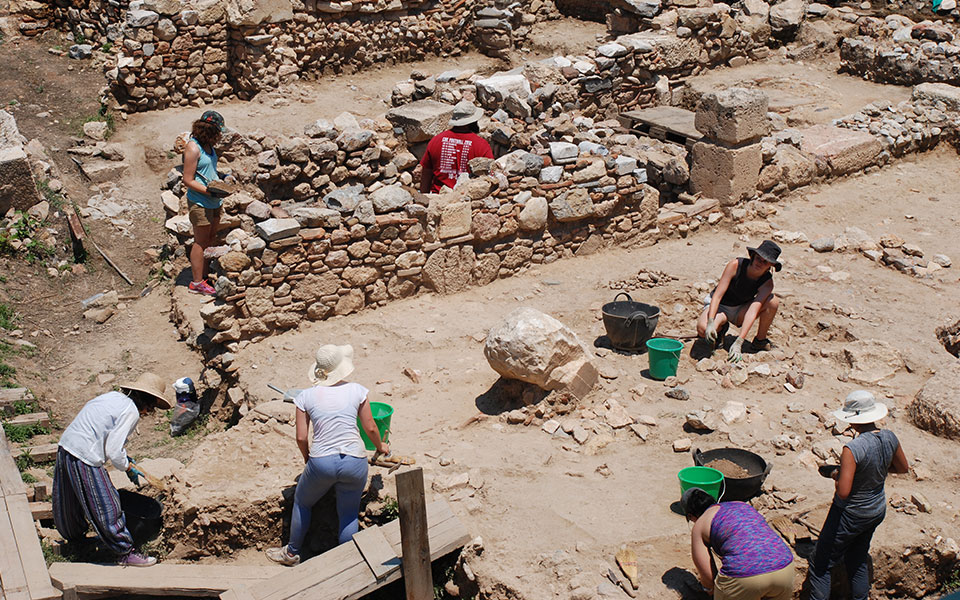
© Shutterstock
The Price of Preservation: A Essential Funding?
Greece’s dedication to heritage preservation is bolstered by stringent authorized protections, requiring builders to evaluate and safeguard cultural belongings throughout development. Beneath the ever-watchful eye of the Ministry of Tradition, these insurance policies make sure the survival of invaluable relics however typically come at a monetary and logistical value.
Building tasks – from metro expansions to lodge complexes and even non-public properties – continuously encounter historic stays, forcing builders to alter plans, conduct excavations, and even redesign whole buildings. This may delay development and drive-up prices, creating tensions between city enlargement and archaeological conservation.
But, these efforts yield long-term advantages. In situ exhibitions inside metro stations and heritage-themed motels that protect on-site ruins can improve cultural tourism, drawing guests wanting to expertise Greece’s layered previous. Public-private partnerships and EU funding have helped offset prices, guaranteeing preservation stays financially viable. Nonetheless, balancing development with safety stays an ongoing problem.
A Mannequin for the World?
Regardless of these challenges, Greece has set a world commonplace for integrating archaeology with fashionable growth. The Thessaloniki and Athens metro tasks function blueprints for different historic cities like Rome and Istanbul, demonstrating that city enlargement and heritage preservation needn’t be mutually unique.
As new infrastructure reshapes Greece’s panorama, the nation’s expertise underscores a basic reality: growth isn’t just about establishing buildings however about respecting the layers of historical past beneath them. Strict constructing codes be sure that even home homes and lodge complexes should adhere to archaeological protocols, reinforcing Greece’s deep-rooted dedication to its previous.
Technological improvements have additionally aided in preservation efforts. Advances in digital mapping and 3D reconstruction enable archaeologists to doc and show artifacts just about, decreasing the necessity for pricey in-situ preservation. These methods provide a promising avenue for future tasks, guaranteeing that Greece continues to honor its previous whereas constructing for the long run.
City enlargement in Greece is a fragile dance between progress and preservation. The query is now not whether or not historical past and modernity can coexist, however how finest to make them thrive collectively.



Recent Comments